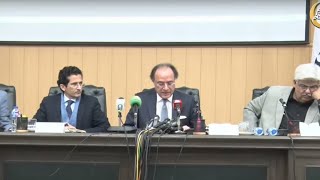Housing is one of the basic need missing in the country, and providing it can help resolve a number of social economic woes. PTI in its recently released 100-days agenda has committed to providing 5 million houses in probably five years, if they come in the power.
The agenda is on the dot. In Pakistan 3.5 people live in a room versus developed world average of 1.1 persons. The country’s housing shortage is estimated at 10-12 million, which is growing every year. Close to half of urban dwellers live in slums or kachi abaadi in Pakistan - 8 million in Karachi and 1.7 million in Lahore.
This housing gap is across all income levels; lower the segment, more pressing is the need. Filling in the housing gap can have a number of advantages from providing own roof to better public health facilities to generate employment.
Construction in general, and housing in particular, is an employment intensive sector - construction constitute 2.8 percent of GDP while employing 7-8 percent of labor force. Then there are around 40-50 SME industries to benefit from construction of houses; and its overall economic impact is much larger.
Today’s column will talk about housing units for middle and upper middle class where the marketable solutions can result in housing to become affordable without any direct fiscal support. The case of low cost housing, which is a dire need and requires direct and indirect subsidies will be covered later.
According to ABAD former chairman, Akber Shiekh in an interview with BR published on 30th March, 2018, “100,000 more houses every year creates 1 million jobs”. This number may be overstated, as it does not take one full year to complete a house; the time ranges from 4-8 months for 3-10 Marla house. BR Research consultation with SME housing builders in Lahore suggests that construction of 100,000 3-Marla houses per year creates around 150,000 rolling jobs, the number is around 200,000 and 350,000 for 5-Marla and 10-Marla houses, respectively. A mix of 100,000 houses of these three denomination can create around 250,000 jobs a year.
The assumption is that equal number of houses are constructed every month in a year. For example, it takes 2 carpenters, one month to complete the job in a 5-Marla house - dividing 100,000 houses by 12 months, around 16,666 carpenters are employed throughout a year. Similar calculation is used for other jobs including electricians, mesons, laborers etc. On average a 5-Marla house building cost comes at Rs4 million - at construction cost of Rs2,500 sq ft with 1,600 sq ft covered area. Building 100,000 houses a year can have an impact of 1.2 percent of GDP. The GDP impact of 100,000 10-Marla and 3-Marla houses are computed at 1.9 percent and 0.8 percent of GDP, respectively.
In case of Karachi, according to ABAD, on average 40-50 employees are associated with construction of forty units building - implying 1.2 employees per apartment and it takes on average three years to complete an apartment building.
On average 25,000 apartment units are produced every year in Karachi, which implies that 75,000 units are under construction at any point of time. This creates 90,000 rolling jobs a year. Take annual increase to 100,000, the job creation reaches 360,000 alone in Karachi. The contribution to GDP is estimated at 1.4 percent of GDP.
Thus, constructing 200,0000 affordable housing units per year in big urban centers for middle class creates 610,000 jobs a year and contributes around 2.3 percent of GDP. The numbers are mind blowing and are based on realistic assumptions. The skill set is not a problem, as the construction industry is wide spread in the country and skills like carpentry, electrification, sanitation and masonry work are easy to transfer; in short it can attain scale.
The above calculations are based on A and B class construction for middle class household living in formal housing societies or apartment buildings. Half of the shortage is for this class, where the high land prices amid lack of housing finance is eluding affordability. Thus, the demand on buying at cash is low; hence the supply is less and shortages are created. The government should not and cannot finance and subsidise these units. The marketable solutions are required to spur demand. The need is to make housing affordable for these dwellers. Do not confuse affordable housing with low cost housing. These are two different animals. The affordable housing is mostly defined as percentage of monthly housing expense (rent, mortgage) to monthly household income. The most widely used ratio around the world is 30 percent.
In Pakistan, the concept is to buy a house fully at cash or buy apartment unit at 3-4 years (contraction time) installment period. The middle class at large cannot afford to buy upfront or in short term installments.
If the mortgage financing by banks and other financial institution such as HBFC spurs, the affordability problem can be resolved. The smart solution for next government is to work with commercial banks, SBP, HBFC and newly created Pakistan Mortgage Refinance Company to come with building housing finance solutions.






















Comments
Comments are closed.